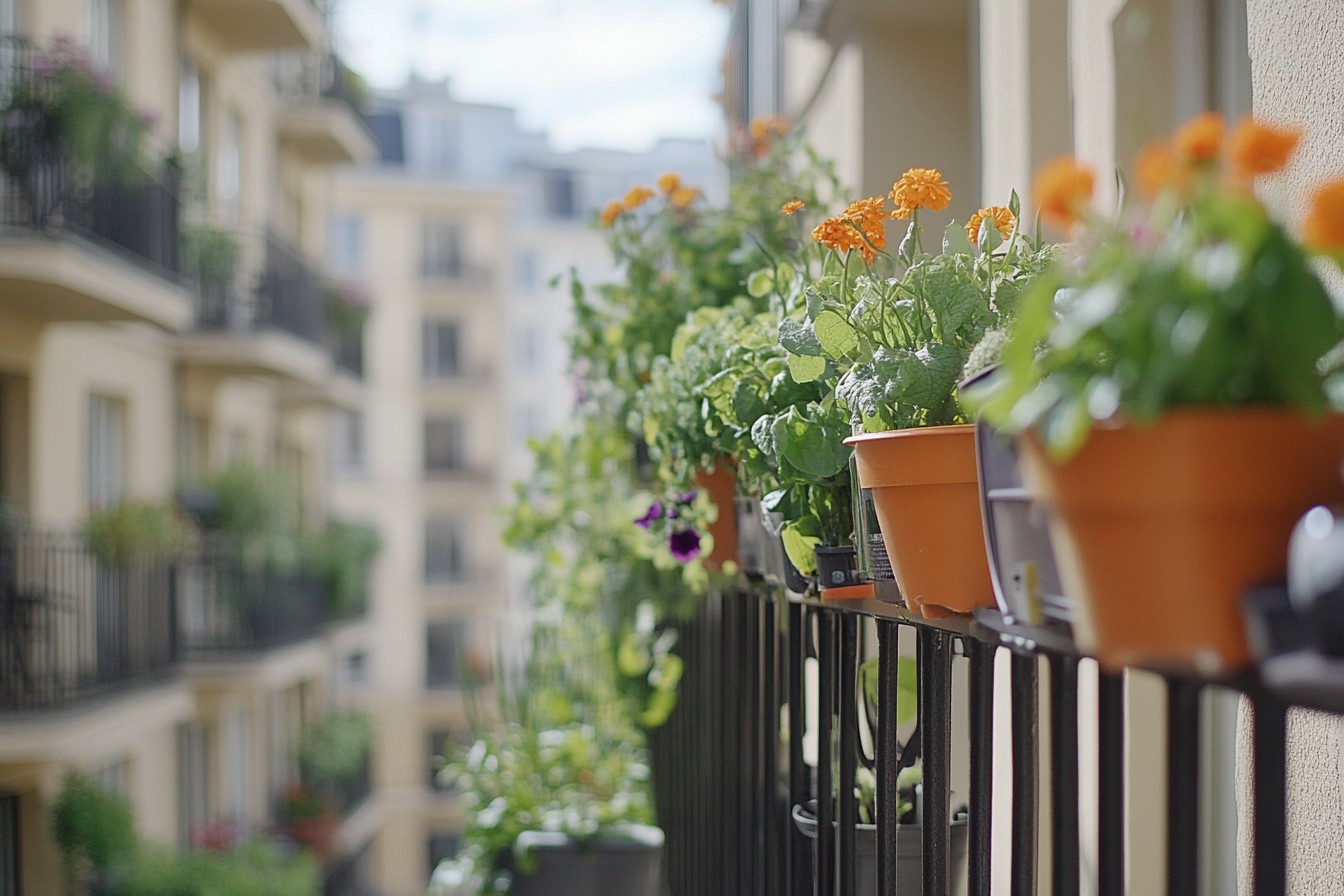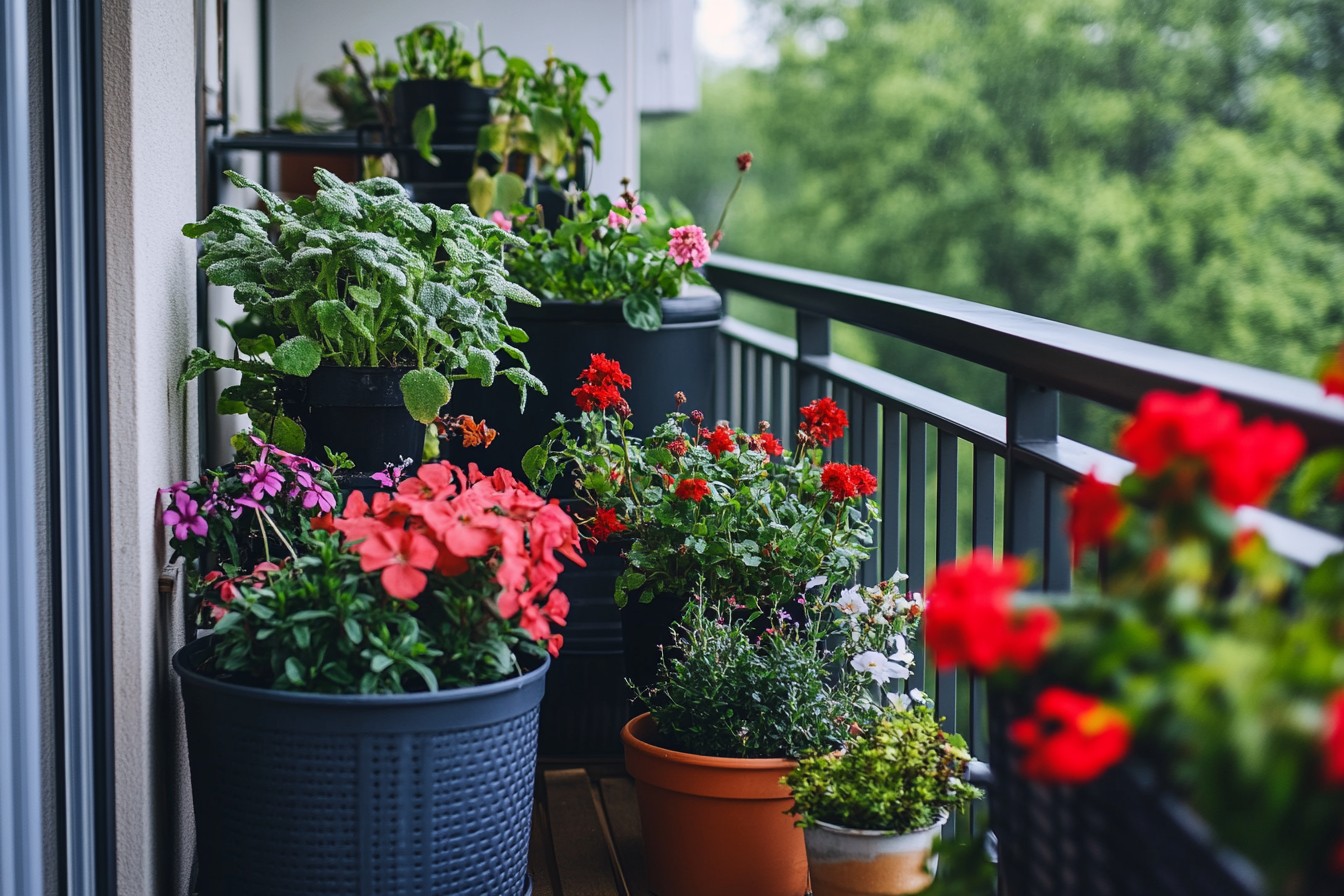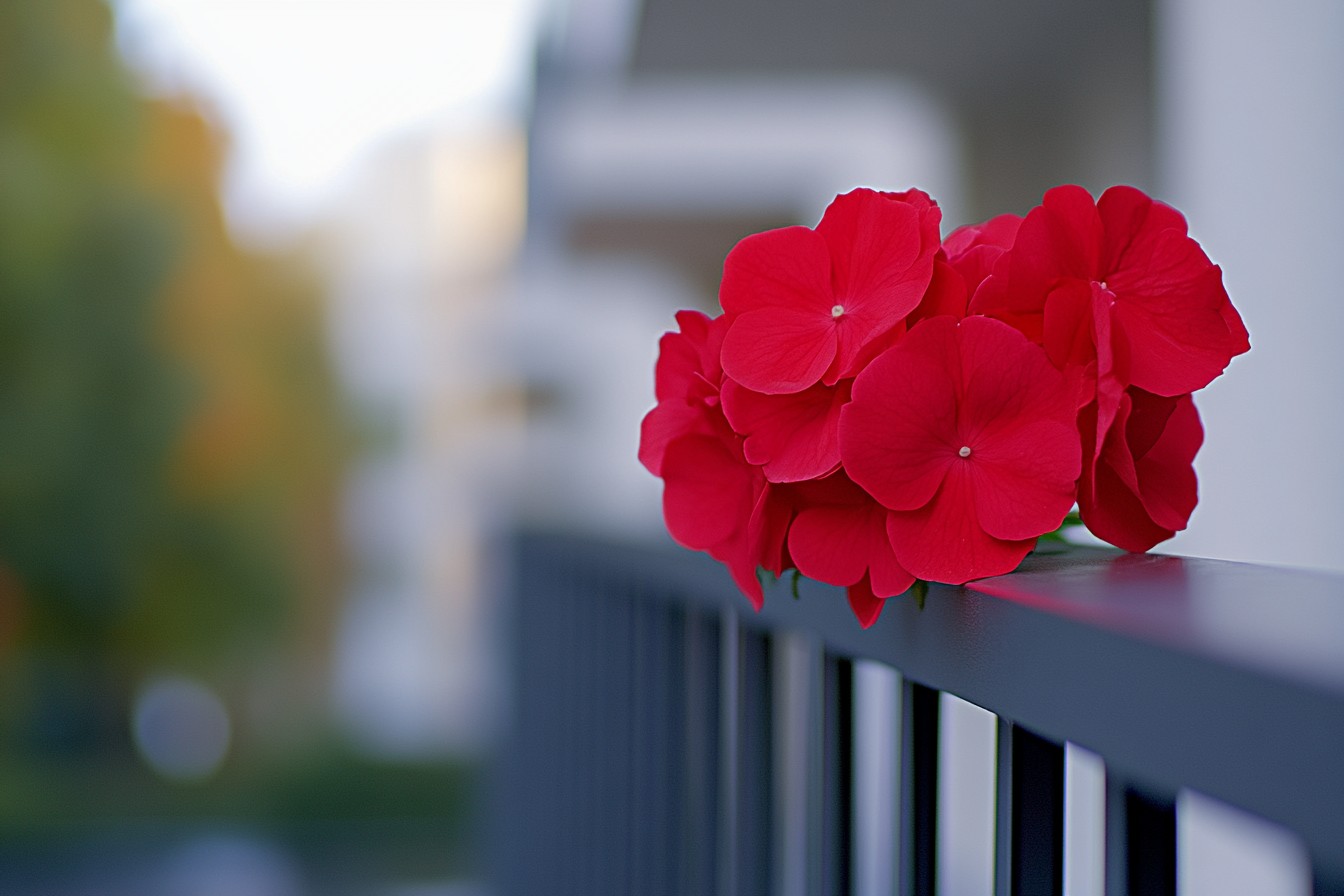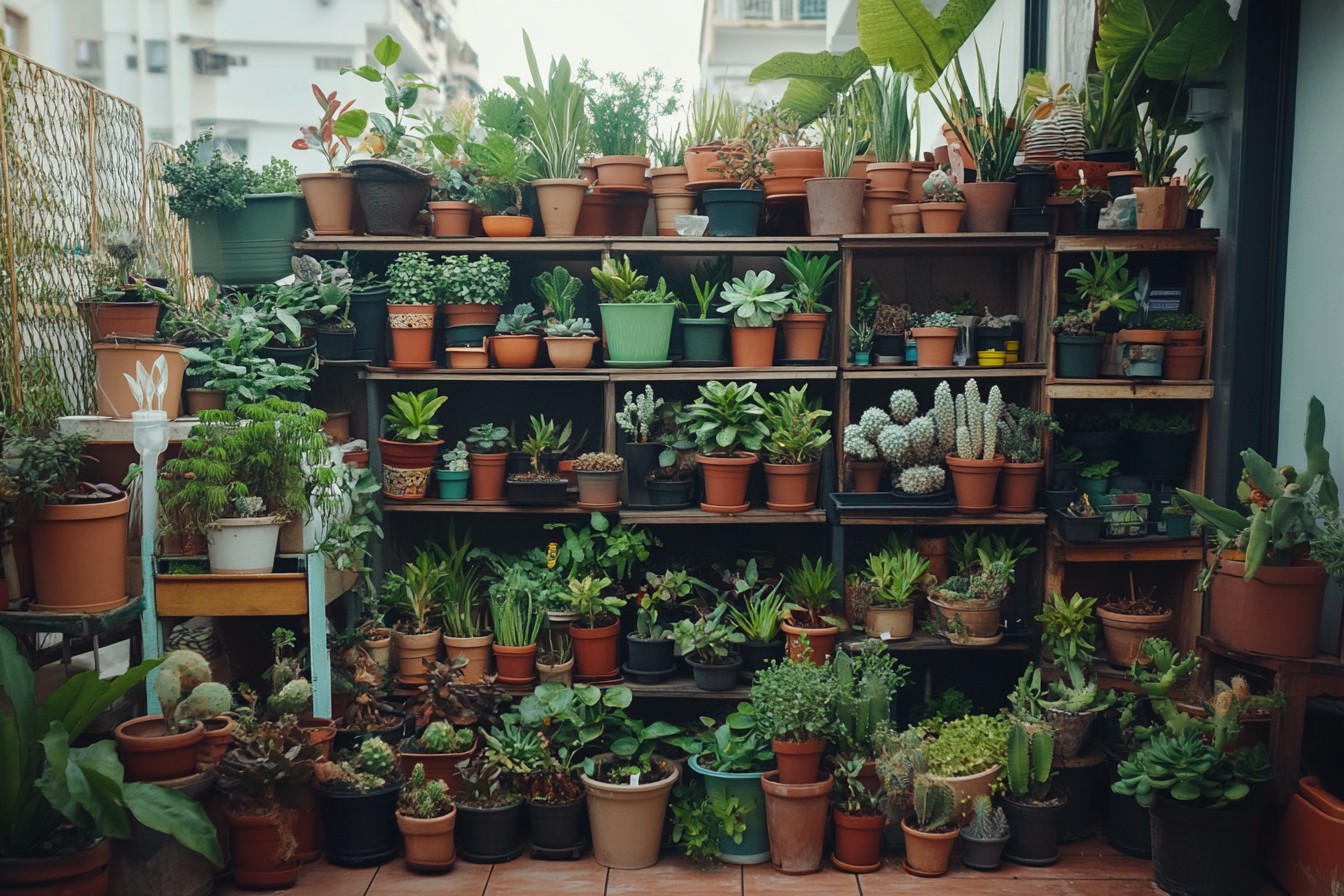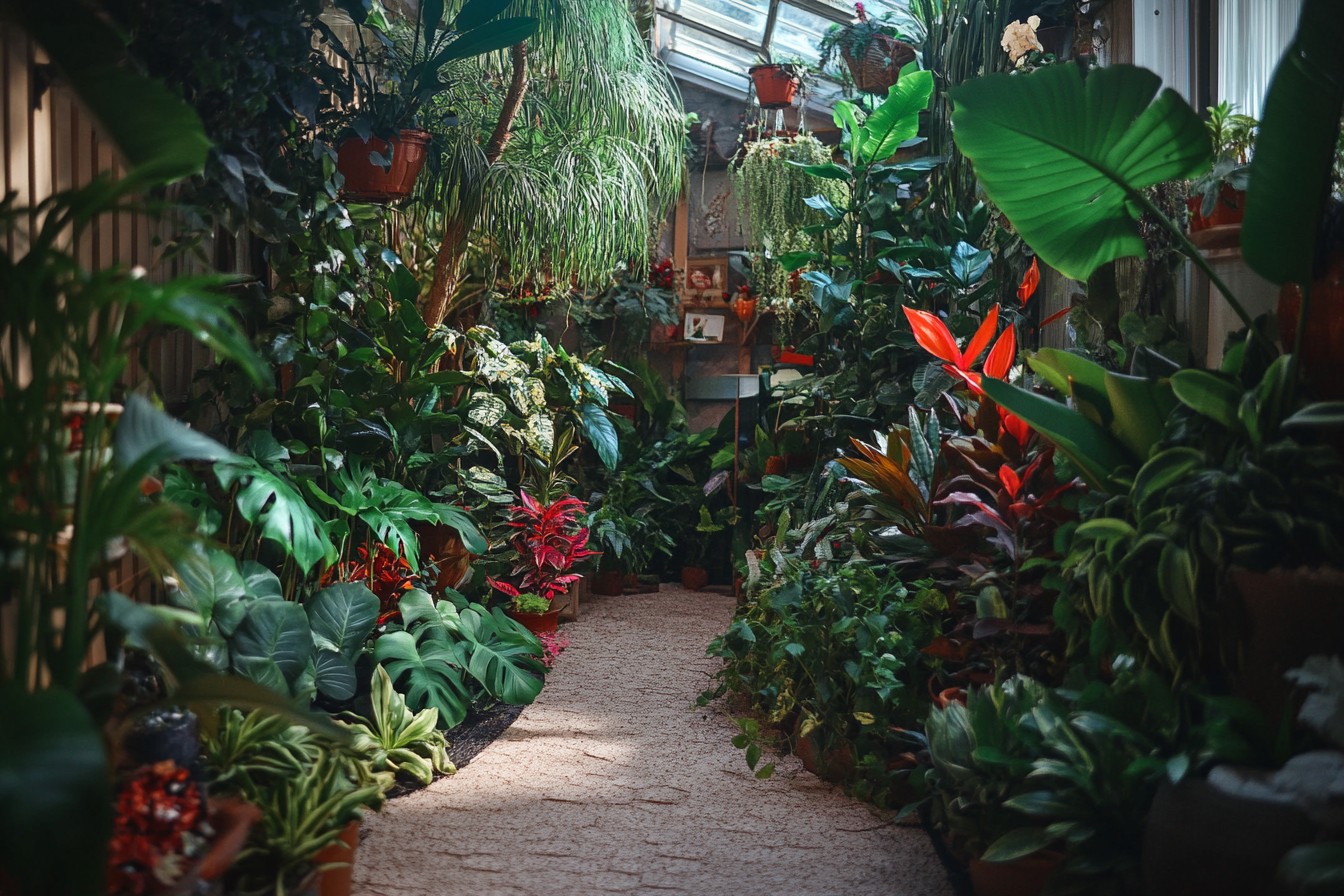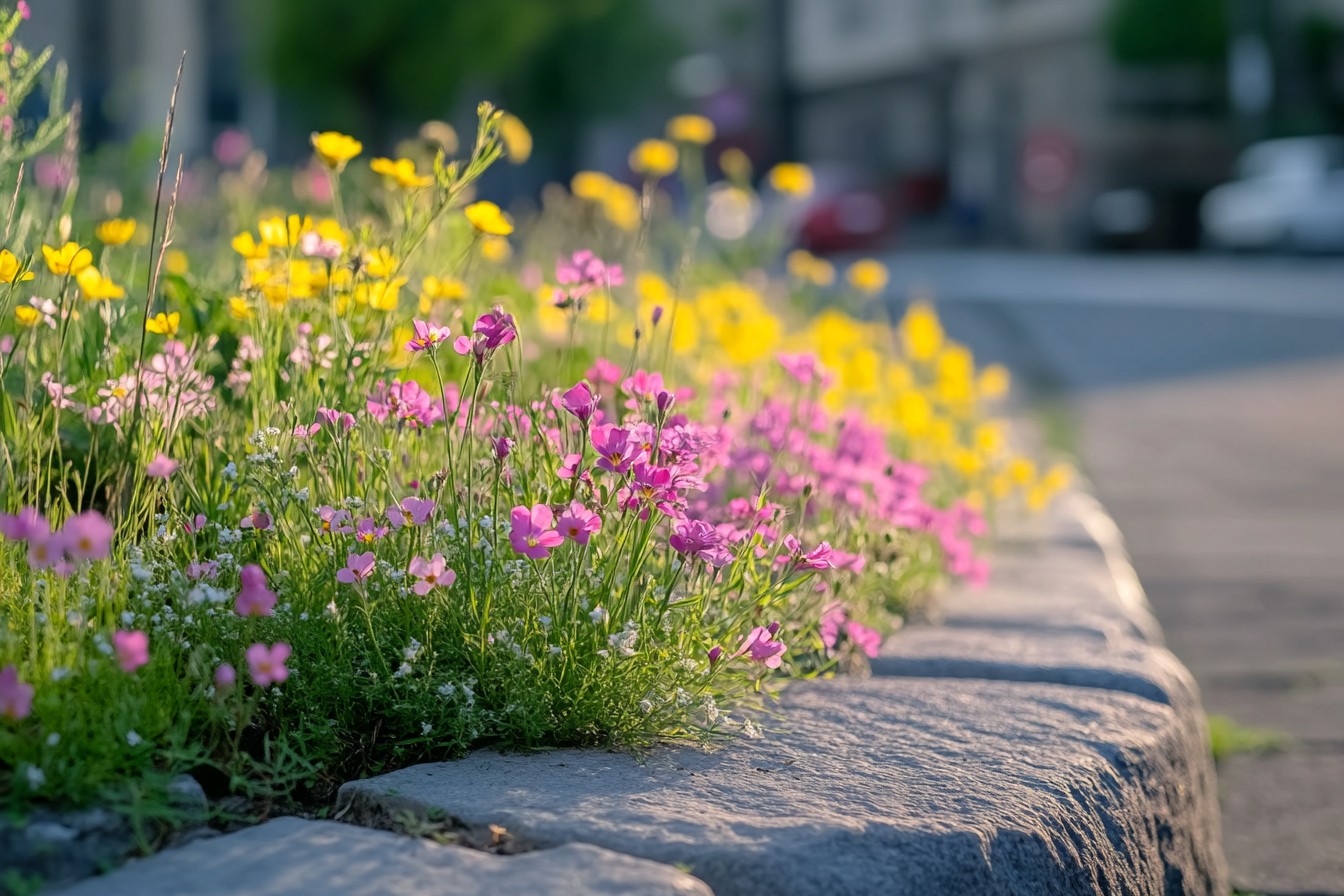If my downstairs neighbor still harbors resentment about the Great Soil Spill of 2021, she’s polite enough not to mention it anymore. In my defense, who designs a 12-inch wide balcony railing and expects it to safely hold a half-full bag of potting mix during a surprise gust of wind? Physics was working against me that day.
Her newly washed car was just collateral damage in my ongoing mission to transform eight feet of concrete slab into something resembling an actual garden. This mission began three years ago when I moved into my current apartment—a place selected almost entirely because it had a south-facing balcony that received approximately 7.5 hours of direct sunlight daily. The realtor highlighted the “open concept kitchen” and “recently updated bathroom fixtures,” but all I saw was that sun-drenched rectangle of potential plant real estate.
I signed the lease while mentally arranging containers along the railings. What followed was a three-year experiment in container combinations—a trial-and-error process that killed approximately 37 plants, annoyed several neighbors, and eventually led to some genuinely stunning plant partnerships that continue to thrive despite my occasional neglect and the challenging microclimate created by a third-floor balcony that functions as both wind tunnel and solar oven depending on the season. My first balcony planting attempt followed the traditional container garden formula: one thriller (something tall and dramatic), one filler (something bushy), and one spiller (something trailing).
I dutifully assembled five identical containers featuring purple fountain grass as the thriller, purple petunias as the filler, and silver dichondra as the spiller. They looked spectacular for approximately three weeks before reality set in. The problem with this perfect formula was that it completely ignored the actual growing conditions of my specific balcony.
The hot afternoon sun baked the petunias despite daily watering. The fountain grass grew so vigorously it shaded out everything else while consuming water at an alarming rate. And the dichondra, which was supposed to gracefully cascade over the edges, instead crisped up like delicate silver tissue paper.
Meanwhile, maintenance required daily watering, frequent deadheading, and still everything looked progressively worse as summer advanced. This spectacular failure taught me my first valuable lesson in balcony gardening: generic advice is just that—generic. Successful container combinations need to be site-specific, addressing the particular challenges of your growing environment.
For my balcony, these challenges included intense afternoon heat, drying winds, space limitations, and my own somewhat irregular maintenance schedule (I travel frequently for work, leaving my plants to fend for themselves for days at a time). Determined to create containers that would actually thrive, I began methodically testing different plant combinations, recording their performance throughout the growing season. Over three years, I’ve found several groupings that not only survive but actually improve over time, complementing each other’s growth habits and needs rather than competing.
Here are the winners from my experimental garden lab, along with the specific conditions that made them successful:
The Mediterranean Dream Team quickly became my most reliable combination. Anchored by a central rosemary plant (the upright ‘Tuscan Blue’ variety), I surrounded it with cascading thyme (specifically ‘Doone Valley’ with its lemon scent and variegated foliage), trailing oregano that spilled beautifully over the edges, and—the surprising star—a compact Greek columnar basil that maintained a bushy form without the constant flowering of standard basil varieties. This combination thrived in a 16-inch terracotta pot that provided excellent drainage and thermal mass to buffer temperature fluctuations.
The plants shared similar watering needs—allowing the soil to dry thoroughly between waterings—and all tolerated the hot, sunny conditions. An unexpected benefit was how their fragrances mingled on warm days, creating what my friend Miguel described as “walking through an Italian kitchen” whenever he visited. The plants in this pot actually improved each other’s performance: the rosemary’s slight resinous scent seemed to deter pests that might otherwise bother the basil, while the dense, ground-covering growth of the thyme suppressed weeds and retained soil moisture by shading the pot’s surface.
From a design perspective, the different foliage textures created visual interest even when the plants weren’t flowering. Cost-wise, this combination was extremely economical. All four plants cost about $12 total as nursery starts, produced harvestable herbs for around seven months, and the rosemary and thyme overwintered successfully on my enclosed balcony for three consecutive years.
The oregano reliably self-seeds, meaning I get volunteer plants each spring without replanting. The Succulent Survivor Squad emerged from my need for a truly neglect-tolerant option that could handle my occasionally week-long absences. In a wide, shallow concrete bowl approximately 18 inches in diameter and only 6 inches deep, I combined Sedum ‘Autumn Joy’ as the focal point, surrounded by smaller Echeveria elegans, with string of pearls (Senecio rowleyanus) and burro’s tail (Sedum morganianum) trailing dramatically from opposite sides.
This combination’s secret to success was the shared shallow root systems and minimal water requirements. The container material was crucial—the concrete bowl’s porous nature allowed excess moisture to evaporate quickly while also insulating roots from rapid temperature changes. The soil mix was equally important: a gritty, fast-draining blend of cactus mix amended with additional perlite and small pea gravel.
What made this combination particularly successful was how it improved over time. The Sedum ‘Autumn Joy’ functioned as a living mulch, its dense growth shading the soil and protecting the more delicate Echeveria from afternoon sun. The trailing succulents initially seemed vulnerable to wind damage, but after an establishment period of about two months, their stems toughened and they’ve withstood even strong gusts without breaking.
This container required watering just once weekly during the hottest summer periods and about once monthly during winter when I brought it inside. The visual impact remained interesting year-round, with the Sedum providing dramatic burgundy flower heads in late summer that dried to an attractive russet color throughout winter. Total cost for plants was approximately $25, but considering they’ve been growing in the same container for over two years with minimal care, the value is exceptional.
The Pollinator Paradise combination consistently attracts more beneficial insects than any other container on my balcony. Centered around a compact butterfly bush (Buddleia ‘Lo & Behold Blue Chip’ that stays under 3 feet), I surrounded it with blazing star (Liatris spicata), globe thistle (Echinops ritro), and a carpet of creeping thyme (Thymus serpyllum ‘Elfin’) that spills over the container edges. This all grows in a 24-inch diameter, 18-inch deep resin pot that I painted dark blue for visual contrast with the mostly purple and silver foliage.
What makes this combination work is the staggered blooming schedule—something I discovered entirely by accident. The creeping thyme flowers first in late spring, followed by the globe thistle in early summer, the butterfly bush from mid-summer to fall, and the blazing star in late summer. This provides nearly continuous blooming from May through September, ensuring a steady stream of pollinator visitors.
The plants share a preference for well-drained soil and have similar water requirements—moderate moisture during active growth but tolerant of drier periods once established. I water this container deeply about twice weekly during summer, allowing the top inch of soil to dry between waterings. The deep container provides sufficient root space for these larger perennials while the soil volume helps buffer against rapid moisture fluctuations.
An unexpected benefit of this combination was how the dense ground cover of creeping thyme seems to deter the seed germination of less desirable plants, keeping the container remarkably weed-free compared to others. The thyme also functions as living mulch, moderating soil temperatures and reducing water evaporation. This container cost more to establish—about $48 for the plants and container—but has provided multiple seasons of interest with minimal replacement costs.
The butterfly bush required light pruning in early spring to maintain its compact form, and I divide the liatris every other year, using the divisions for new containers or gifting to friends. The Edible Aesthetics arrangement emerged from my desire to grow food crops that wouldn’t make my balcony look like a farm plot. In a rectangular planter 30 inches long, 14 inches wide, and 12 inches deep, I created an edible landscape that’s as beautiful as it is productive.
The central structural element is a columnar apple tree (Malus ‘Urban Apples’) that stays narrow but provides height. Surrounding it are ever-bearing strawberries and trailing nasturtiums that cascade over the edges, with compact ‘Spicy Globe’ basil filling any remaining surface area. This combination works because of complementary root structures—the apple’s roots grow primarily downward while the strawberries and nasturtiums have shallow, spreading root systems that utilize different soil zones.
They all thrive in rich, consistently moist soil, making watering management simple. What truly makes this combination successful is the pollination partnership. The nasturtiums attract bees that also pollinate the apple blossoms, significantly improving fruit set.
The basil seems to deter certain pests that might otherwise bother the strawberries, while the dense growth of strawberry plants shades the soil and suppresses weeds. The visual appeal changes dramatically through the seasons—spring apple blossoms give way to developing fruit, while the nasturtiums provide brilliant color from early summer until frost. The strawberries offer textural interest with their foliage even when not fruiting.
This container provides something harvestable from May through October: strawberries first, then nasturtium flowers and leaves for salads, continuous basil, and finally apples in late summer. At $65 including the specialty apple tree, this was my most expensive container planting, but it produces approximately $85 worth of edibles annually and continues improving as the apple tree matures. The strawberries need refreshing every two years, and the basil and nasturtiums are treated as annuals replanted each spring.
The Persistence of Peppers combo came about entirely by accident. I had a 14-inch glazed ceramic pot in which I planted a single Hungarian hot wax pepper plant, primarily because it was on clearance for $2.99 and looked sad. To fill the bare soil around it, I poked in a few surplus chive divisions and some leftover white alyssum seedlings that were languishing in six-packs.
I expected nothing from this throw-together arrangement. To my surprise, this became one of the most productive and visually appealing containers of the season. The pepper plant produced prolifically, setting fruit from June until October.
The chives provided vertical linear elements with their straight foliage, while the alyssum quickly filled every inch of exposed soil with frothy white blooms that attracted tiny beneficial wasps that helped control aphids on the pepper. The success of this combination seems to stem from complementary growth habits and compatible needs. All three plants prefer consistent moisture and benefit from regular feeding.
The shallow-rooted alyssum used space the deeper-rooted pepper didn’t need, while the chives’ mild onion scent appeared to deter certain pepper pests. The alyssum’s dense growth suppressed weeds and retained soil moisture, benefiting everything. This container required more regular watering than some others—typically every other day during peak summer heat—but produced an impressive yield: one pepper plant generated over 35 peppers through the season, while the chives provided multiple harvests and the alyssum offered continuous visual appeal.
Total plant cost was under $10, making it my most economical successful combination. Of course, not every combination was successful. My most spectacular failure was the “Tropical Vacation” container featuring a dwarf banana plant, canna lilies, and sweet potato vine.
While it looked magnificent for about three weeks in early summer, the banana quickly outgrew the space, the canna proved extremely thirsty (requiring twice-daily watering during heat waves), and the sweet potato vine grew so vigorously it tried to colonize neighboring containers. The entire arrangement became unmanageable by mid-July, with water requirements I couldn’t reliably meet and a scale insect infestation that spread to nearby plants. Sometimes ambition outpaces practicality.
Another notable failure was my attempt at a native prairie container with little bluestem grass, purple coneflower, and prairie dropseed. While ecologically sound in theory, these plants simply needed more root space than even my largest containers could provide. The grasses never achieved their characteristic fountain-like form, instead remaining stunted and unattractive, while the coneflowers stretched awkwardly toward the sun.
Some plant communities simply aren’t meant for container life. Through these successes and failures, I’ve identified several principles that consistently lead to successful balcony container combinations:
Compatible water needs are non-negotiable. Nothing dooms a mixed container faster than combining a drought-tolerant sedum with a moisture-loving fern.
When plants with different water requirements share soil, someone always suffers. My most successful combinations feature plants with nearly identical moisture preferences. Root structure compatibility matters more than I initially realized.
Combining plants with similar rooting depths leads to competition and underperformance. My best containers feature plants with complementary root structures—some deep, some shallow, some fibrous, some spreading—that utilize different zones within the soil volume. Container material significantly impacts plant performance.
Terra cotta and other porous materials create different moisture conditions than glazed or plastic containers, even with identical soil mixes. My Mediterranean herbs thrive in moisture-wicking terra cotta but struggle in moisture-retaining glazed pots, while the opposite is true for moisture-loving tropicals. Microclimates exist even within a single balcony.
The west end of my balcony receives about 15% more wind than the east end due to building architecture, affecting water retention dramatically. Plants that failed in one location often succeeded just a few feet away due to these subtle environmental differences. The “thriller, filler, spiller” formula isn’t wrong, but it’s incomplete.
Successful combinations need to account for growth rates, seasonal change, and compatible cultural needs beyond just visual design principles. A perfectly balanced container that requires daily maintenance isn’t successful if your schedule only allows for twice-weekly care. After three years of experimentation, my balcony has evolved from a place of constant turnover and plant funerals to a surprisingly stable ecosystem of successful container combinations.
I’ve learned to work with my specific conditions rather than against them, selecting plants that actually want to live in the peculiar environment a third-floor balcony provides. The unexpected benefit has been how these plant communities have begun to influence each other even between containers. Pollinators attracted to the butterfly bush visit the apple tree blossoms.
Beneficial insects that control pests move freely between different plant groupings. The balcony has developed its own microclimate that seems to become more hospitable to plant life with each passing season. My neighbor’s car has remained soil-free for over two years now, thanks to improved container security measures and hard-earned wisdom about proper bag handling in windy conditions.
The building manager recently asked if I’d be willing to help redesign the building’s ground-level landscaping, which I’m choosing to interpret as professional recognition rather than an attempt to redirect my gardening energy away from potentially gravity-assisted soil distribution. If there’s a lesson in all of this experimentation, it’s that successful container gardening comes from observation and adaptation rather than rigid formulas. The perfect plant combinations for your balcony, patio, or doorstep will emerge from paying attention to the specific conditions you’re working with and how plants respond to them.
Generic advice offers starting points, but your best teachers are the plants themselves—especially the ones that die instructive deaths for the greater good of your gardening education. And remember: always place the potting soil bag on the balcony floor, never the railing. Some lessons are learned the hard way, but I’m happy to pass them along without requiring you to apologize to your neighbors.

